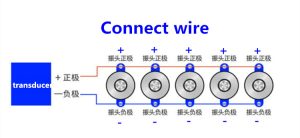Ultrasonic transducer for cleaning

| Resonant Frequency | 40±0.5KHz |
| Static Capacitance | 5400±10%pF |
| Resonant Impedance | ≤7Q |
| Max Power | 60W |
| Insulation Resistance | ≥800MQ |
| Piezoceramics | PZT4 |
| Operating temperature | 80°C |
| Weight | 285g |

Understanding Ultrasonic Cleaning:
Ultrasonic cleaning involves the use of high-frequency sound waves, typically above the range of human hearing (20 kHz or higher), to create tiny, rapid vibrations in a liquid medium.
These vibrations generate microscopic bubbles known as cavitation bubbles, which implode upon contact with the surface of objects being cleaned.
The implosions produce intense localized energy, releasing shock waves that dislodge and remove dirt, grease, oils, and other contaminants from the surface.
Advantages of Ultrasonic Cleaning:
Unmatched Precision: Ultrasonic cleaning excels in reaching intricate and hard-to-reach areas that are often inaccessible to traditional cleaning methods.
It ensures thorough and uniform cleaning, even in complex structures or delicate components, such as jewelry, electronics, surgical instruments, and automotive parts.










Reviews
There are no reviews yet.